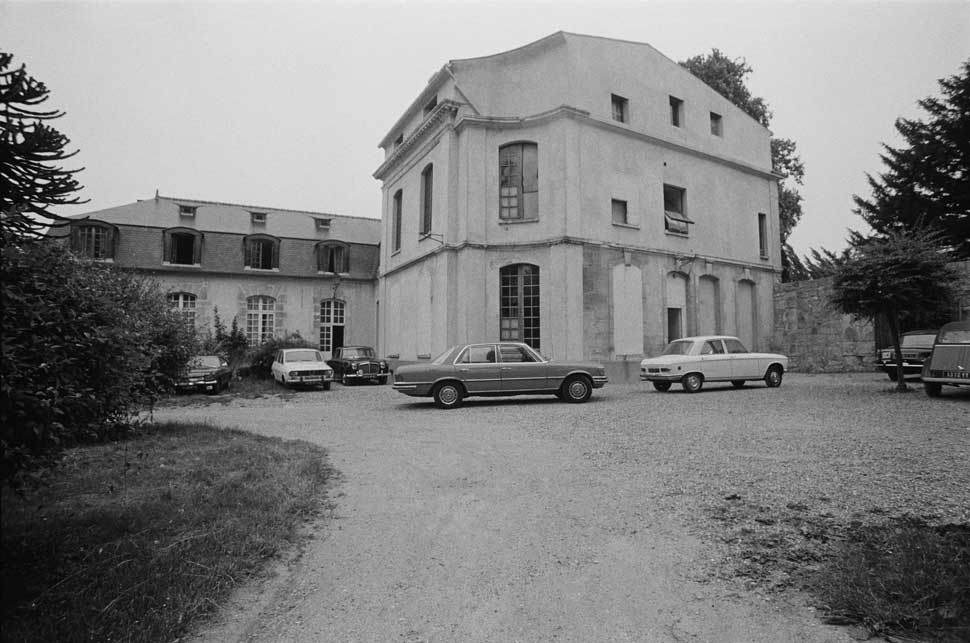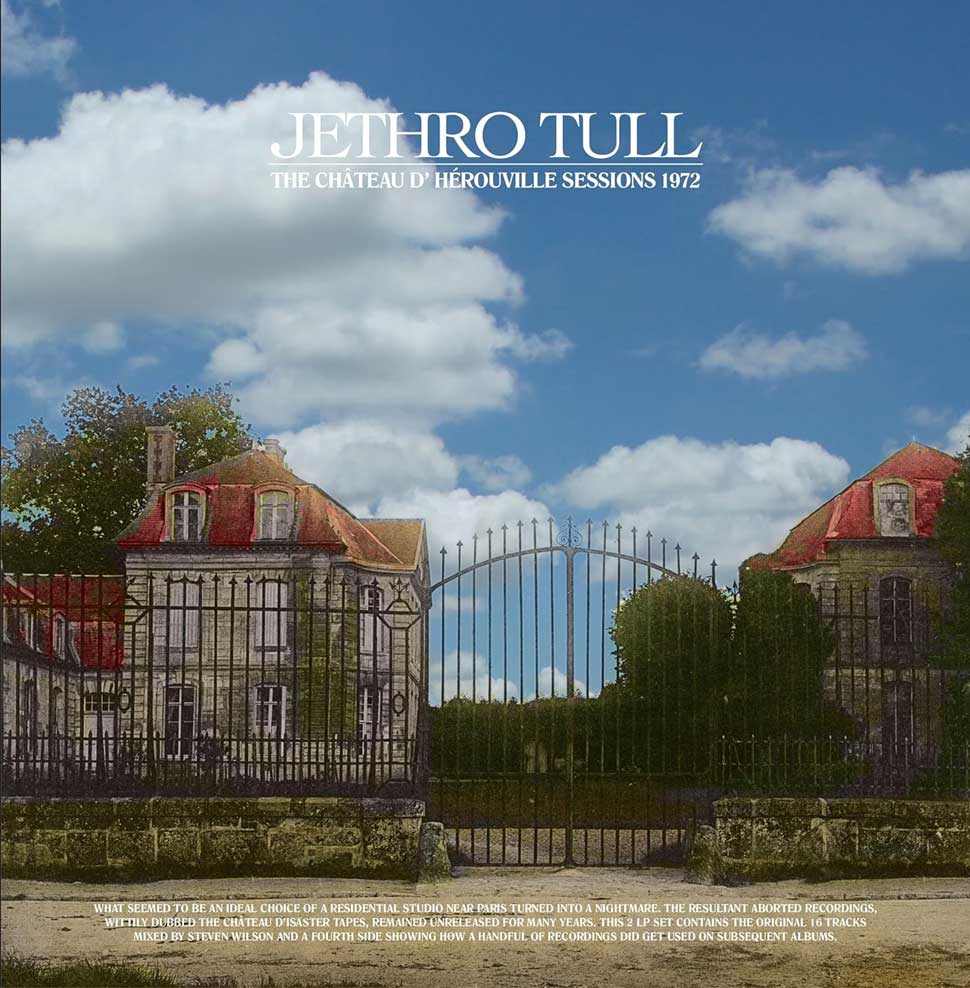
For Jethro Tull, 1972 was a bumper harvest year. In June their fifth album Thick As A Brick compounded the success of the previous year’s Aqualung by landing them their first US No.1. By November they were riding high again with Living In The Past, a hefty double compilation album that was another Top 10 hit on both sides of the Atlantic.
But the year hadn’t quite been the hands-down triumph it seemed. The late summer had seen Ian Anderson and his band of artsy prog-folksters abandon a new studio album after a succession of setbacks. They’d repaired to the faded 18th-century splendour of the Château d’Hérouville outside Paris.
“It was a run-down, rambling old building,” recalls Anderson. “And it had been the studio of choice of those availing themselves of the ‘offshore’ opportunities of tax-avoidance in the heady days of 83 per cent income tax. We assumed it must be a great studio, given the reputation and work of the artists who’d recorded there [Pink Floyd, T. Rex and Elton John were recent visitors]. But it was dirty, the equipment often didn’t work and the accommodation was awful.”
Undeterred, Tull set about working through a fresh batch of songs. These included instrumentals like Tiger Toon and First Post, alongside the lyrically driven Look At The Animals.
“The plan was to rehearse and then record each song-section as it reached fruition and performance standard,” Anderson explains. “But it was a bad plan. Some of the material sounded a bit ponderous, and there were too many sections in the same tempo and with the same feel.”

The overarching theme was the erosion of traditional culture in the face of modern ‘progress’ and new technology. All of which was examined through our kinship with the animal kingdom and the natural order of things. Anderson’s songs, like Law Of The Bungle and Look At The Animals, suggested that, no matter how far we think we’ve evolved, the baser elements of our nature will always remain.
“The animal theme was a big part of it,” he says, “but there were disparate sub-themes going on too. I was trying to be too clever by half. The ‘theatre of life’ metaphor sections were good bits. I should have stuck with that. And, of course, it went on to be the setting for A Passion Play [1973], at least in terms of the album cover art and text.”
It wasn’t just the tunes that refused to behave, a series of technical hitches disrupted the sessions. The band struggled on until they had roughly three sides of backing tracks for a proposed double LP, but all was not well. The situation reached farcical levels when everyone contracted a nasty bout of food poisoning.
“Technical difficulties got the better of us,” says Anderson, “together with a restlessness in the ranks of the band mainly on account of having to run for the loo at regular intervals courtesy of the dodgy, unpasteurised Camembert. The red wine had flies in it. The mystery meat caused musicians to head loo-wards at a fast gallop, quite in keeping with its equine origins. There were bedbugs. And one engineer even got a nasty scabies parasite infection.”
The “restlessness” related to Tull’s living situation at the time. The band had decamped to Montreux in Switzerland earlier in ’72, primarily to make the most of their first flush of monetary success in the land of the tax exile. Yet by the time they were ensconced in the Château, the novelty of living in Montreux was wearing thin.
“A couple of the band – John Evan and Martin Barre – were happy to make Montreux home. But Barrie [Barlow] and Jeffrey [Hammond] wanted to go back to England. I was left in the middle, and directed my casting vote homeward in order to keep the band together, rather than have it fragment or put some of them through the torture of living abroad. So we remained UK taxpayers. It was the best thing for us all in the long run, but they were stressful and divisive moments.”
It all came to a head when Anderson took a call one night from concert promoter and friend Claude Nobs, proudly informing the band that their Swiss residency cards had come through. “At this point, the band became instantly infected with a bad case of homesickness. We left for Blighty the next day.”
On returning home, Anderson began writing material for what was to become Thick As A Brick’s follow-up proper – A Passion Play. Three of the Château songs – Only Solitaire, Bungle In The Jungle and Skating Away On The Thin Ice Of A New Day – made it onto 1974’s War Child. Others remained on the shelf until 1988, when an 11-minute segment (Scenario/ Audition/No Rehearsal) fetched up on the box set 20 Years Of Jethro Tull.

By ’93, a 50-minute portion of the Château D’Isaster Tapes appeared on another compilation, Nightcap.
“There were some parts where I felt that the band had played really well and the words and music deserved an outing,” Anderson says of the decision to issue them. “But a lot was just unfinished rough recordings – demos, really – and were a bit shaky, playing-wise. With little or no vocals and almost no flute.”
Some of the instrumentals do sound shapeless. But the more cohesive songs, such as Scenario or the nine-minute Critique Oblique, Anderson’s scathing riposte to Tull’s detractors in the music press, are far more successful. A mixed bag, for sure, but hardly the all-out failure Anderson imagined.
2014 finally saw a comprehensive release of the Château D’Isaster Tapes, remixed and remastered by long-time Tull fan Steven Wilson and included in the 40th anniversary release A Passion Play: An Extended Performance. “He felt that the material should be available to the fans in a cleaned-up more punchy way, and to reflect the unfinished work in a truthful statement," says Anderson.
Given the benefit of so many years’ distance, does he feel differently about those recordings now?
“Even the wobbliest moments have some fleeting elements of magnificence, especially in hindsight. So I’m happy to hear these flawed gems again, and invite them to take their place alongside the other work of which I’m more obviously proud. Alongside but slightly in the background. It’s like a rather disappointing grown-up child. You don’t exactly want it coming over for Sunday lunch each weekend, but when Christmas dawns you welcome the rotten fruit of your loins into the family bosom once again and try to conjure a swelling of paternal pride.”
The Château D’herouville Sessions will be released on vinyl for the first time on March 15.







